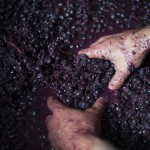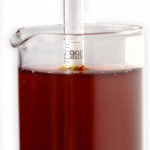Top 7 Do’s and Don’ts for Winemaking in Your Home Winery
Let’s face it. There are A LOT of things that can go wrong during the winemaking process. Here are 7 tips for your home winery to help ensure your wine is as tasty as ever.
-
Don’t use bleach!
- While bleach is a great way to clean your bathroom, it is very hazardous to your winery.
- Chlorine bleach is toxic to humans and should never be used to clean any vessels that are used for food purposes.
- Bleach molecules also are prone to lodging themselves in cellulose material. They quickly attach to wood, cardboard, and cork, even through airborne transmission. This is the cause of cork taint, an irreparable wine fault. When the corks have been contaminated with chlorine bleach, they will contaminate the wine they come in contact with, causing a musty, stale aroma.
-
Do a weekly check of airlocks, tank seals, and barrel bungs.
- Accidents happen, and sadly, many accidents can be avoided. Make a good habit of doing a weekly walk through of your home winery.
- Check that your airlocks have the appropriate amount of water.
- Check the gaskets on any tank lids are inflated and on correctly.
- Check that barrel bungs are securely in place and barrels are completely filled up. These small steps can prevent oxidation before it starts.
-
Do rinse off soda ash and B-Brite, Don’t wash off sulfite solution or 1-Step sanitizer.
- Soda Ash and B-Brite are excellent cleaners in the winery. They can help remove the toughest wine stains and wine debris from tanks and carboys.
- They should always be treated like soap and be rinsed off thoroughly.
- A wise additional step is to neutralize any remaining soap with a citric acid rinse. Sulfite solution or 1-step sanitizer can then be applied to sanitize any vessels or equipment. This should not be rinsed off but the equipment should be allowed to drain or remove any bulk remaining pools of sanitizer.
-
Do add sulfites when you rack (every 8 weeks).
- As wine ages, sediment will fall out in precipitate.
- Wine should be siphoned off of the precipitate every few months to maintain clarity and “cleanliness”.
- This is an ideal time to add sulfites. Add 1/4tsp of sulfite powder per 5 gallons of wine. Sulfite powder should always be dissolved in warm water before being stirred into the wine.
-
Don’t reuse store bought bottles.
- While it may seem like a very cost effective step, reusing old bottles can lead to many problems further down the road.
- Never try to put a cork on a screw top bottle! The glass is thinner where the threads are and when trying to remove the cork using a wine opener, the glass is highly prone to cracking.
- All bottles are made differently and can have different diameter necks. It is very important to have the same size corks and bottles to prevent leaks later on. Conversely, if the corks are too large for the bottle, it will be very hard to insert them and this can damage the cork.
-
Don’t soak or boil the corks!
- Soaking or boiling the corks prior to inserting them will actually degrade their quality.
- They will absorb too much liquid and can become brittle or leach the liquid into the bottled wine.
- Instead, lightly mist the corks with sulfite spray prior to bottling.
- Always keep leftover corks in a sealed container.
-
Do Mop up Spills!
- Spills are inevitable in a winery. Be careful to mop up any spills that occur and clean well with a non-bleach cleaner.
- Wipe the exterior of carboys and tanks to be sure there isn’t any wine residue.
- Wipe lids of tanks often if there is any leaking from the airlock or seal.
- If wine spills or leaks are left to sit, it can easily turn acetic, which is an easy source of contamination to the wine. Fruit flies can land on the spill and transfer acetic bacteria into your wine if they happen to land in it.
Interested in making your own wine? Musto Wine Grape Company is here to help! We are New England’s largest supplier for home winemaking products and services. We can get you set up with all of your juice, grape and equipment needs and have you on track to making your own perfect pairing for next fall! Visit juicegrape.com or give us a call at (877) 812 – 1137 to learn more. We look forward to hearing from you!
The Winemaker’s Think Tank: Vol 36 – “If I want to make a blend, do I mix the grapes together when I crush, or ferment them separately and blend later?”
What’s the Winemaker’s Think Tank?
Every Thursday we will post about a few frequently asked questions that our winemaker has answered. If you have a winemaking question you would like to have answered, please email us at support@juicegrape.com and we will try to get into next week’s post. Cheers! 🙂
If I want to make a blend, do I mix the grapes together when I crush, or ferment them separately and blend later?
There are many approaches to creating a blended wine and the chosen path is directly influenced by the desired end result. Blending at crush is often referred to as a field blend. The winemaker may choose to blend at crush when 80% of the blend is one grape. Using cabernet sauvignon as an example, a winemaker may add in a crate or two of Petite Syrah or Petite Verdot to enhance the dark color of the Cabernet Sauvignon. The winemaker may choose to add a crate or two of Cabernet Franc to enhance the spiciness and perceived acidity of the wine. Adding a small amount of a different grape to the larger percentage of the dominant grape in a blend will change the wine subtly, enhancing an aspect of the original grape that may be lacking such as color or acidity.
If the winemaker would prefer to have greater and much more finite control over the flavors in the resulting blend, fermenting each varietal individually would be more advantageous. Different yeast strains may be used on different varietals to enhance specific varietal characters. After a period of separate bulk aging, the wine maker can make different sample blends to determine the final blend of the wines they desire. Perhaps the entire quantity of a varietal will not be needed for the blend or perhaps only small additions of one varietal to another will be necessary to create a balanced final product. The winemaker can create more than one blend with a few separately vinified wines as changing the varietal percentages can greatly affect the final product.
We hope this information helps with your winemaking. If you have any follow up questions or winemaking questions in general, please email us at support@juicegrape.com.
Wine Class Schedule
We have a bunch of classes coming up! Make sure to RSVP via Facebook or Sign Up via the website!
Saturday September 23rd: Common Winemaking Mistakes (FREE) at 10:00AM – RSVP by clicking HERE
Saturday September 30th: Winemaking 201 – Winemaker Lab Skills ($75.00) at 10:00AM – sign up by clicking HERE
Saturday October 7th: Winemaker Bootcamp ($150.00) at 9:00AM – sign up by clicking HERE










Recent Comments